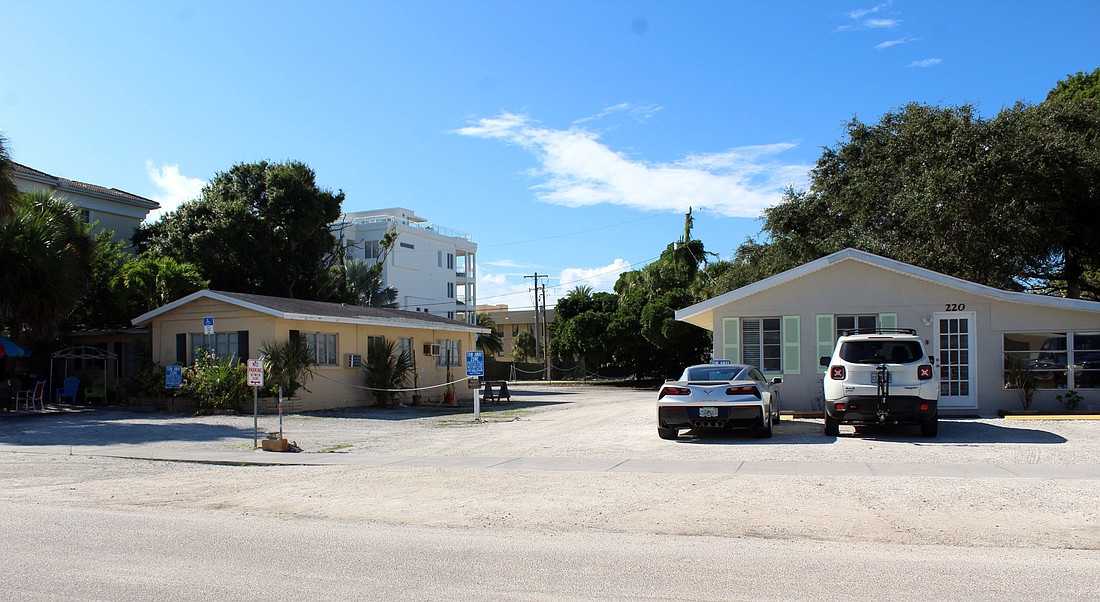- July 26, 2024
-
-
Loading

Loading

Siesta Key residents again argued for hours Monday night over a proposal for a new hotel just south of Siesta Village, which is one of three projects Siesta residents oppose.
Developers proposed three hotel projects for Siesta Key, which, if approved, could have long-term implications to Sarasota County’s density and transient accommodation regulations. The projects are:
In a workshop to discuss Anderson’s hotel on Monday, residents argued the hotel would exacerbate traffic in Siesta Village and bring an unwanted transient nature to the barrier island.
“I find that the proposal is detrimental to the health, safety, order, comfort, convenience and appearance of the neighborhood,” resident Joyce Kouba said. “I find the project is not adequately buffered to effectively separate traffic, visual impact and noise from existing use.”
Kelley Klepper, a land-use planner for developer Kimley-Horn, said primary access will be limited to Calle Miramar, and an easement will be added along Beach Road to restrict vehicular access.
The hotel proposal seeks to eliminate the counting of hotel rooms for units-per-acre density purposes and includes modifications to the county’s Future Land Use Policy, which applies to residential density limits on the county’s barrier islands.
Anderson’s hotel would sit on just less than 1 acre in Siesta Key’s Overlay District. It would need a special exception to allow its proposed height of 80 feet — the maximum height allowed by right is 35 feet.
The county currently allows up to 13 units per acre with a kitchen or 26 units per acre without a kitchen on the property. Anderson proposes 170 units on 1 acre.
Residents say the projects would set a “dangerous precedent” if approved.
Klepper said the developers are proposing a binding development concept plan which, if approved by the County Commission, would be adopted as part of the approval process. It would set limits on any future amendments or modifications.
“We’d have to go back through a process to amend key aspects of the plan,” Klepper said. “It’s crude.”
The Siesta Key Coalition, an organization that began in opposition of the hotels, is requesting the county handle all three hotel proposals at one time.
Two of the three developers are requesting revisions to the county’s long-range growth map out of cycle, which would allow the developers to build outside current regulations. If approved, it could mean a countywide shift in development restrictions.
Mark Spiegel, the chair of the Siesta Key Coalition, said the County Commission and Planning Commission should consider “the collective adverse impact of all pending hotel development projects on or near Siesta Key.”
“These hotels will collectively add 460 rooms with the prospect of an additional 1,000-plus transient guests spilling onto Siesta Key roads and beaches in high season,” Spiegel said.
He said officials should look at the bigger picture and review the 1999 Siesta Key community plan that led to the Siesta Key Overlay District.
“Our appointed and elected representatives have a responsibility, one they took seriously in the 1999 process, to understand the implications and legal precedents that the proposed developments would have on our barrier island,” Spiegel said.
Among the coalition’s concerns are:
Spiegel said county leaders need to listen to the “overwhelming concerns” of Siesta residents.
“We need those representatives to lead, bring solutions to traffic and beach challenges, find answers within existing regulations and codes, not open the floodgates to high-rise, transient accommodations that will put at risk what makes our barrier island such an attractive destination,” he said.
The County Commission will meet Jan. 26 to vote on an out-of-sync comprehensive plan amendment and Unified Development Code amendment for the project.